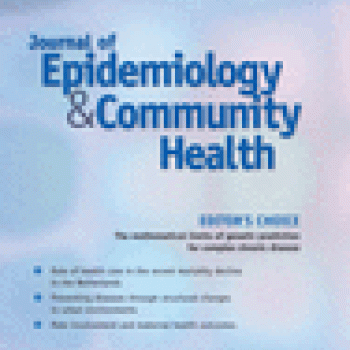
Objective: To test the hypothesis that maternal common mental disorders (CMD) are associated with poorer child nutritional status in four developing countries (Ethiopia, India, Vietnam, and Peru).
Design: Community based cross sectional survey in 20 sites in each of the four countries. Maternal CMD measured by the self-reporting questionnaire 20 items (SRQ20). Potential confounding factors include: household poverty, household composition, maternal characteristics such as age and education, child characteristics such as birth weight, age, and sex. Possible mediating factors included the child's physical health and breast feeding status.
Setting: Urban and rural, poor and middle income areas in each country.
Participants: 2000 mothers and their children aged 6-18 months in each country.
Main outcome measures: Child stunting and underweight measured using standard anthropometric techniques.
Results: Levels of maternal CMD and child malnutrition are high in each study setting. After adjusting for confounding factors, the odds ratios (OR) for the association of maternal CMD with child stunting are: India 1.4 (95%CI 1.2 to 1.6), Peru 1.1 (0.9 to 1.4), Vietnam 1.3 (0.9 to 1.7), and Ethiopia 0.9 (0.7 to 1.2). For child underweight, the confounder adjusted ORs are: India 1.1 (0.9 to 1.4), Peru 0.9 (0.6 to 1.2), Vietnam 1.4 (1.1 to 1.8), and Ethiopia 1.1 (0.9 to 1.4). No clear evidence for effect modification by the child?s age or sex was found. Possible mediating factors for the effect of maternal CMD on child malnutrition did not provide strong suggestions for potential mechanisms.
Conclusions: There was a relation between high maternal CMD and poor child nutritional status in India and Vietnam. However, the findings from Peru and Ethiopia do not provide clear evidence for a similar association being present in non-Asian countries. Regardless of the direction of the relation, child nutrition programmes in Asia should consider incorporating promotion of maternal mental health.
The final published version of the article is available on the journal website.

Objective: To test the hypothesis that maternal common mental disorders (CMD) are associated with poorer child nutritional status in four developing countries (Ethiopia, India, Vietnam, and Peru).
Design: Community based cross sectional survey in 20 sites in each of the four countries. Maternal CMD measured by the self-reporting questionnaire 20 items (SRQ20). Potential confounding factors include: household poverty, household composition, maternal characteristics such as age and education, child characteristics such as birth weight, age, and sex. Possible mediating factors included the child's physical health and breast feeding status.
Setting: Urban and rural, poor and middle income areas in each country.
Participants: 2000 mothers and their children aged 6-18 months in each country.
Main outcome measures: Child stunting and underweight measured using standard anthropometric techniques.
Results: Levels of maternal CMD and child malnutrition are high in each study setting. After adjusting for confounding factors, the odds ratios (OR) for the association of maternal CMD with child stunting are: India 1.4 (95%CI 1.2 to 1.6), Peru 1.1 (0.9 to 1.4), Vietnam 1.3 (0.9 to 1.7), and Ethiopia 0.9 (0.7 to 1.2). For child underweight, the confounder adjusted ORs are: India 1.1 (0.9 to 1.4), Peru 0.9 (0.6 to 1.2), Vietnam 1.4 (1.1 to 1.8), and Ethiopia 1.1 (0.9 to 1.4). No clear evidence for effect modification by the child?s age or sex was found. Possible mediating factors for the effect of maternal CMD on child malnutrition did not provide strong suggestions for potential mechanisms.
Conclusions: There was a relation between high maternal CMD and poor child nutritional status in India and Vietnam. However, the findings from Peru and Ethiopia do not provide clear evidence for a similar association being present in non-Asian countries. Regardless of the direction of the relation, child nutrition programmes in Asia should consider incorporating promotion of maternal mental health.
The final published version of the article is available on the journal website.

